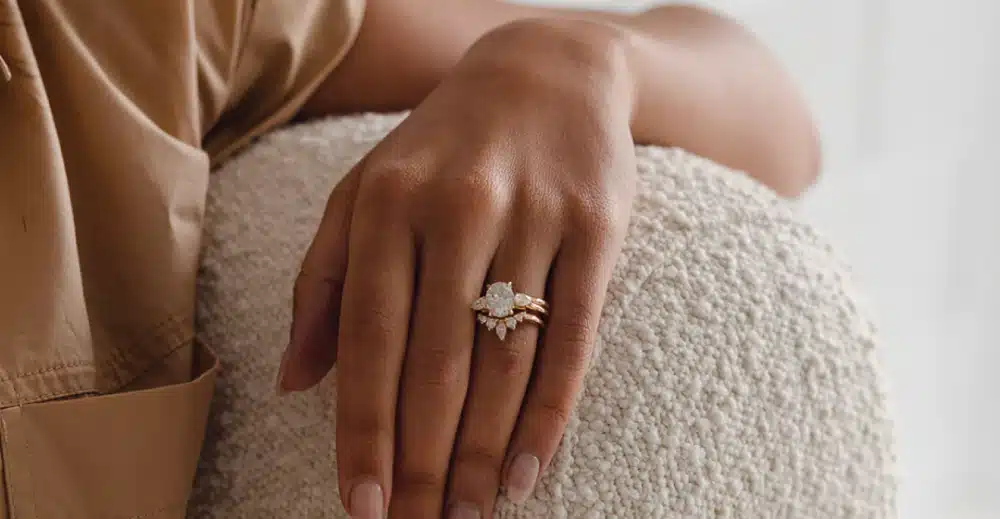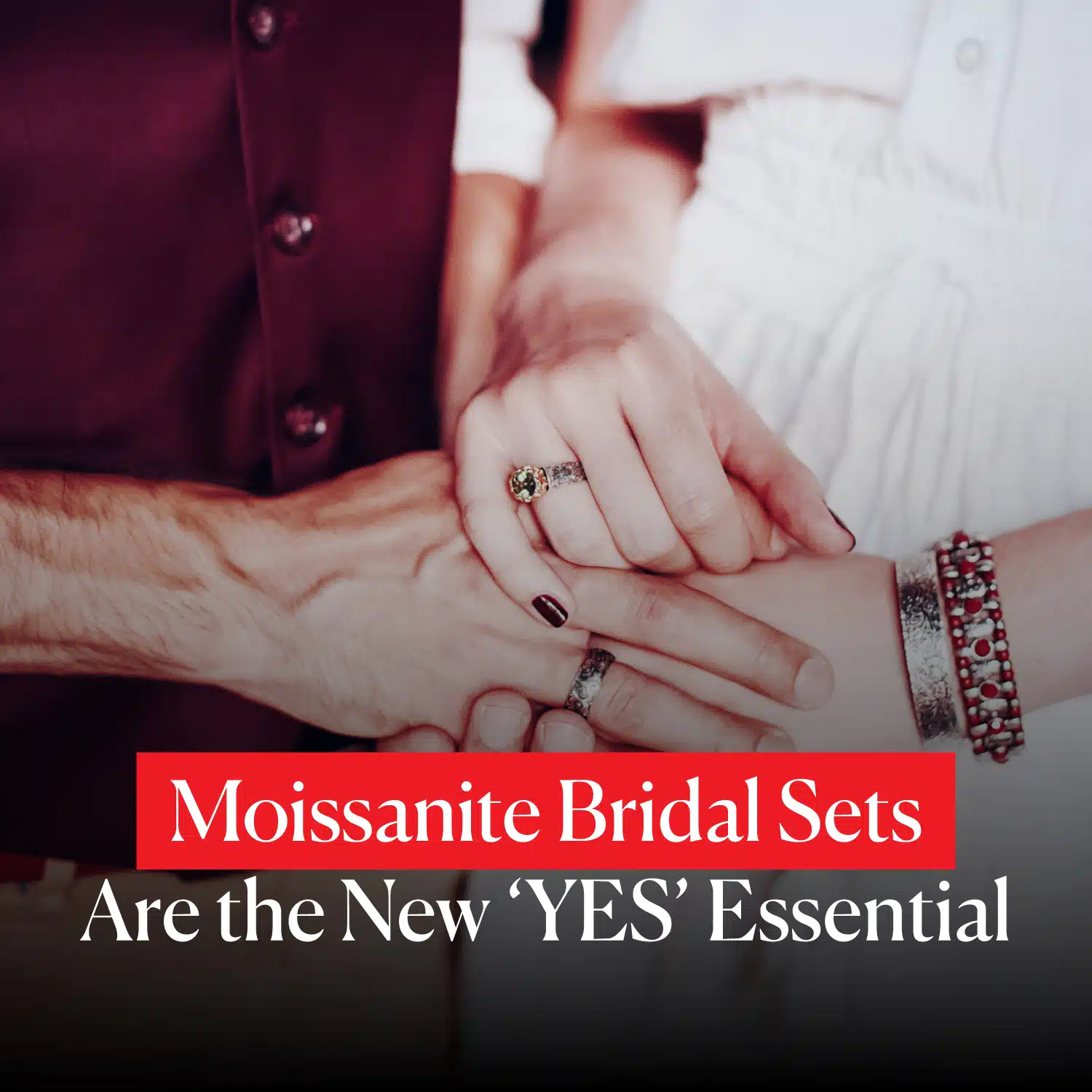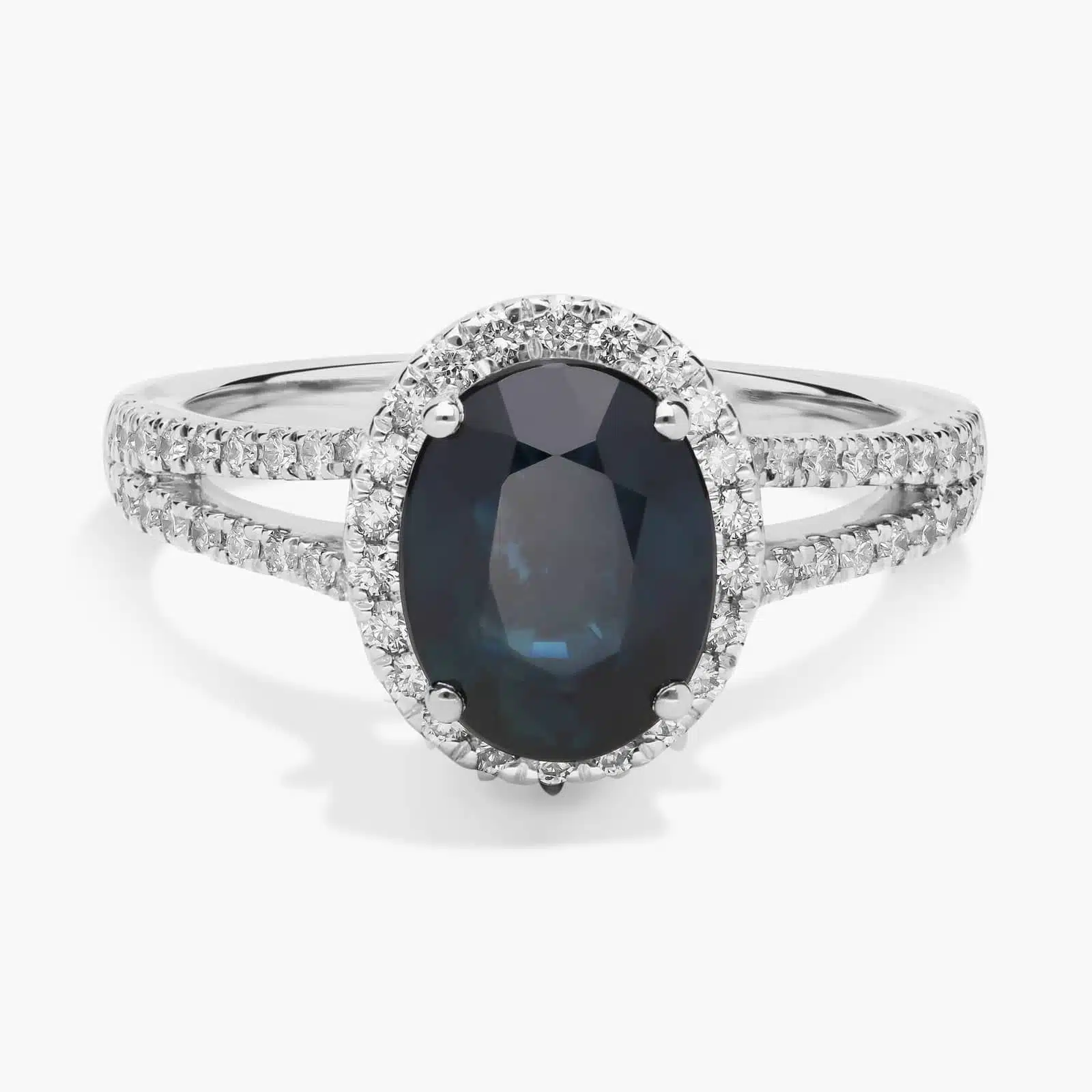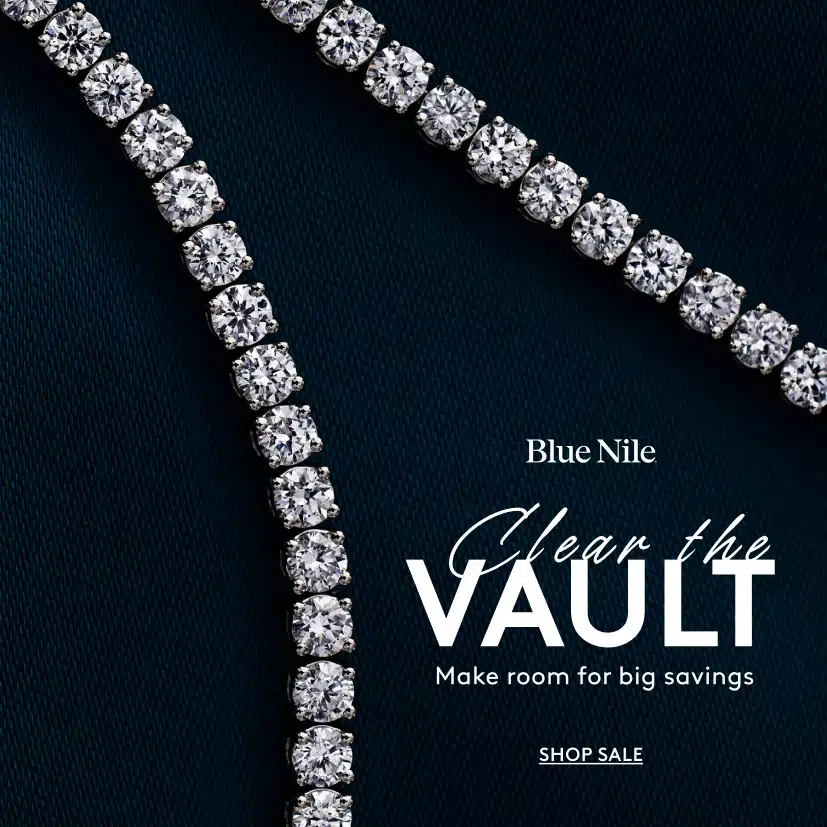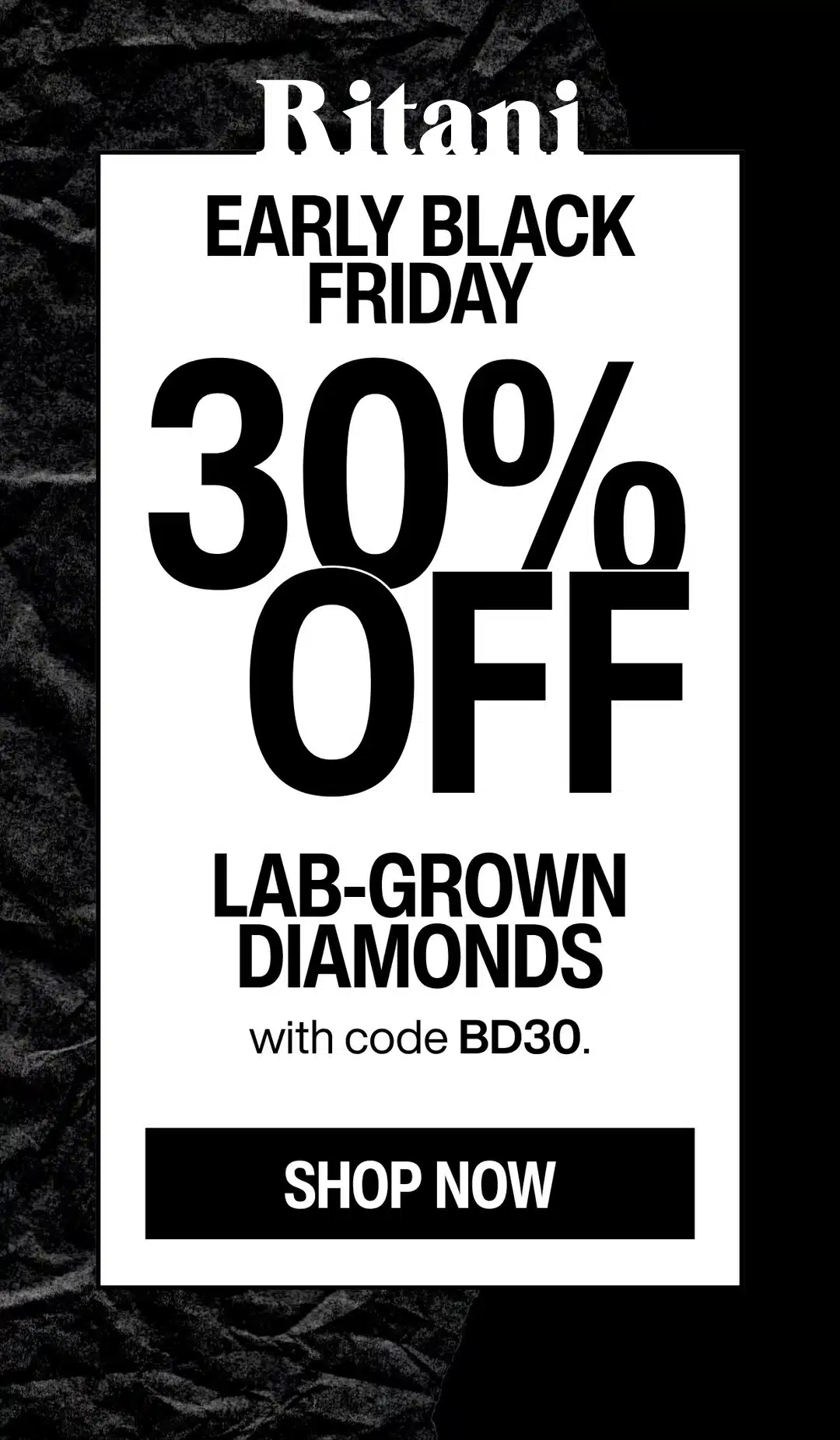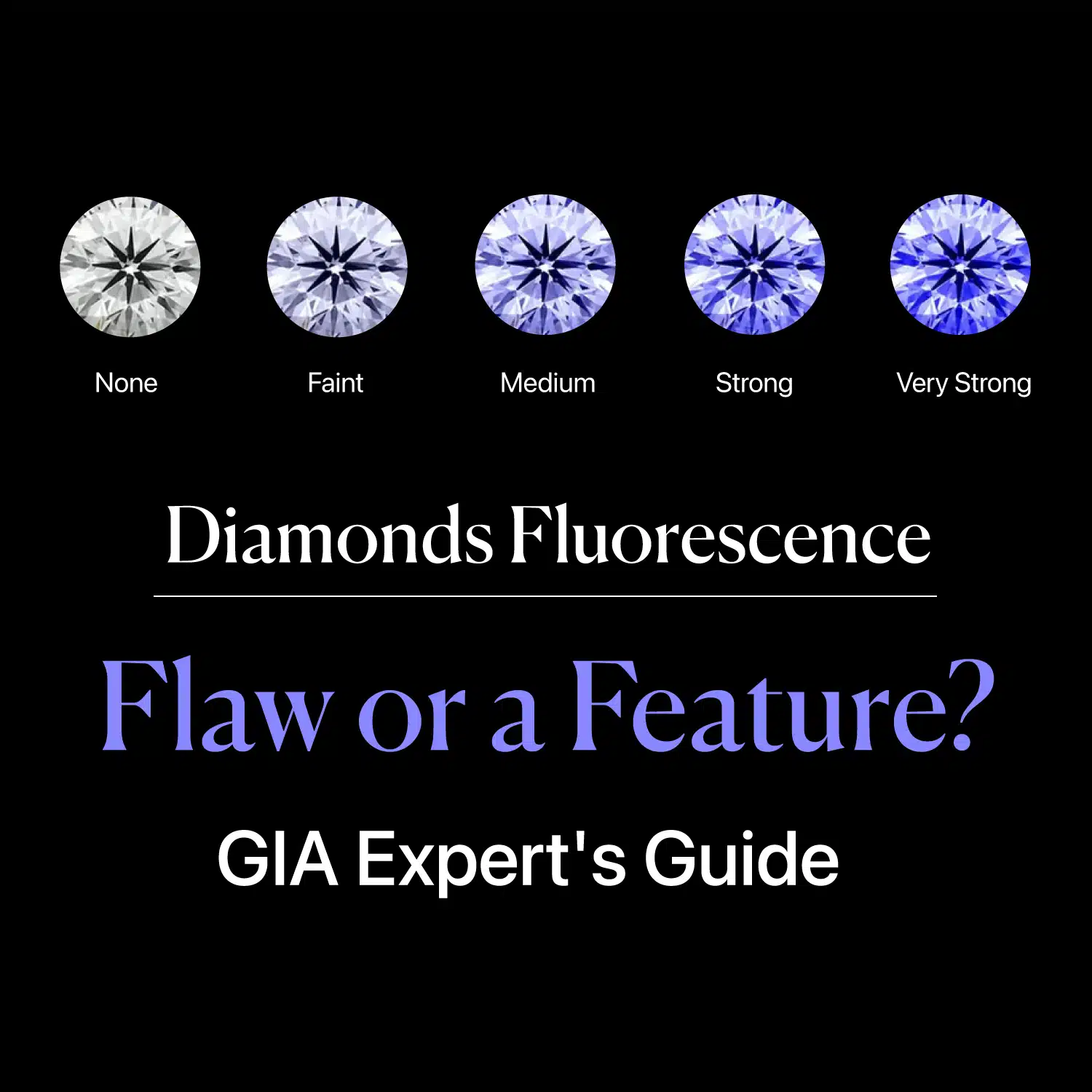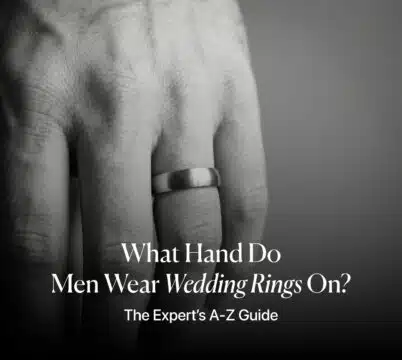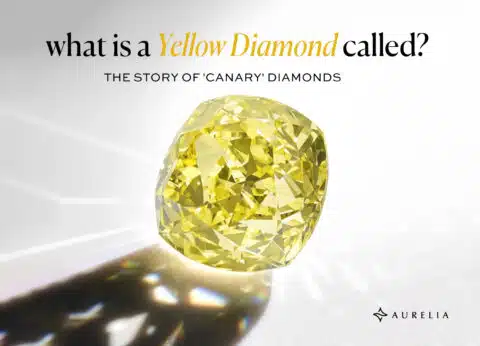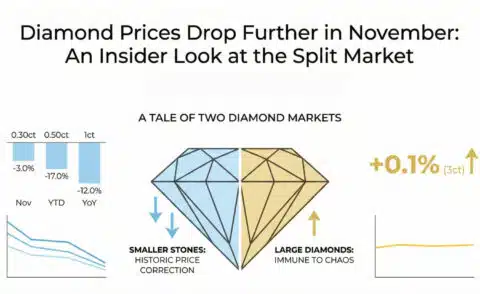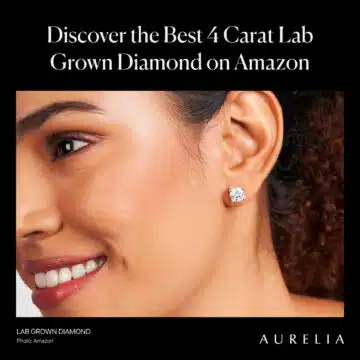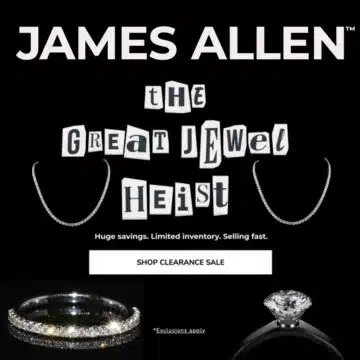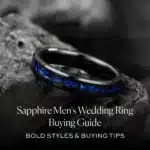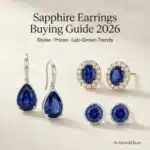Let’s settle the debate right now: for a tiny fraction of diamonds, yes, diamond fluorescence can be a flaw. For the vast majority, it’s a complete non-issue. And for a very specific category of diamonds, believe it or not, it’s actually a secret feature that can make the stone look better and save you money.
But let’s be honest. You’re not here for a simple science lesson. You’re here because you saw ‘Fluorescence: Strong Blue’ on a report, did a quick search, and now you’re terrified you’re about to buy a ‘defective’ stone that glows in the dark.
The internet is full of conflicting advice, and frankly, it’s a mess. My job is to give you the straight, unfiltered truth so you can make a smart call.
In this guide, we’re going to break it all down. We’ll look at what is fluorescence in a diamond with real photos, so you can see the effect for yourself. We’ll examine how GIA grades it, pinpoint the exact situations where it can be a problem, and reveal the insider’s secret of when it can be your best friend.
By the end, you’ll have a simple checklist for how to approach fluorescence for your specific diamond and you’ll shop with total confidence.
- What is Diamond Fluorescence, Anyway? A Simple Explanation
- How is Diamond Fluorescence Graded on a Certificate?
- The Verdict: When is Diamond Fluorescence Good or Bad?
- The Top 12 Myths About Diamond Fluorescence (Let's Get a Few Things Straight)
- The Mehedi Checklist: My Practical Rules for Buying
- The Final Verdict: Flaw or Feature?
- Your Questions, Answered
Diamond IQ Test: Natural or Lab-Grown?
Two identical diamonds: GIA Certified, 1.51ct, D Color, VVS1, Ideal Cut. One is natural ($16,530), the other is lab-grown ($2,390). Choose the diamond you like better and see if you can match it to its origin.
What is Diamond Fluorescence, Anyway? A Simple Explanation
Before we can even talk about whether diamond fluorescence is good or bad, we need to get on the same page about what it actually is. It’s one of the most misunderstood and feared terms on a diamond report, but the concept is surprisingly simple.
Honestly, the best analogy I’ve ever used is this: think of a classic white t-shirt at a glow-in-the-dark bowling alley. The shirt looks perfectly normal in regular light, but the second you walk into the lane and those purple-ish black lights turn on, the shirt glows an intense, bright blue-white.
Diamonds under ultraviolet light behave in the exact same way. Fluorescence is simply the tendency of some—not all—diamonds to emit a soft, visible glow when they are exposed to a strong UV light source.
Now, let’s look at some hard evidence.
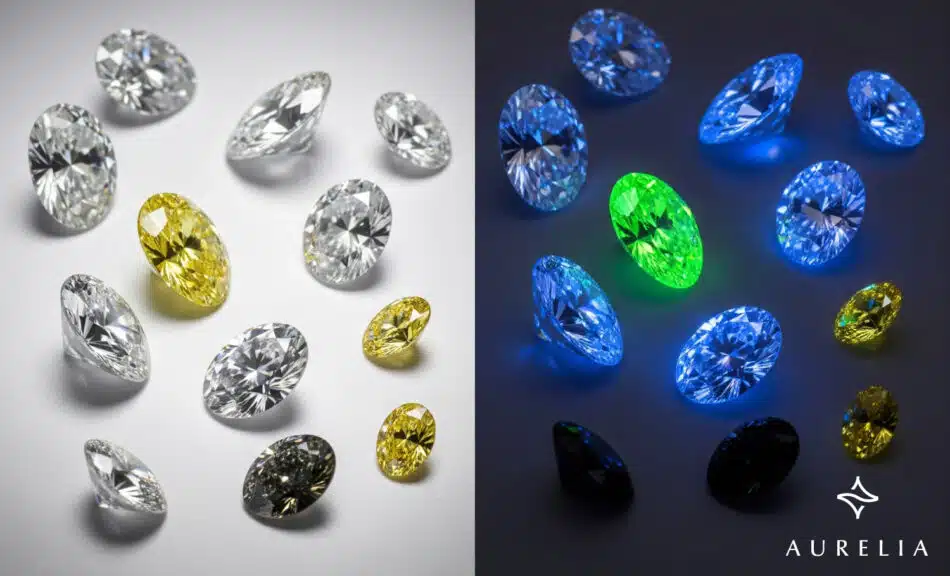
This single image says more than a thousand words.
On the left, you see a collection of beautiful diamonds sitting under normal, everyday lighting, just as you’d see them in a store or on your hand. On the right, you see those exact same diamonds, but this time they are being exposed to a gemologist’s professional UV lamp.
That colorful glow you see? That is what fluorescence is in a diamond. Notice how some stones have a strong blue glow, some have a greenish-yellow glow, and a couple of them don’t glow at all. That, in a nutshell, is the phenomenon.
The “Why” Behind the Glow: Is This Natural?
This is the first question and anxiety I always address with clients. Is this glow a weird, artificial additive? Is it a sign of a defect? The answer is a firm no.
Why do some diamonds glow under UV light? The answer goes back a billion years to the moment the diamond was first formed deep within the Earth. A diamond is made of carbon atoms locked in a perfect, repeating crystal structure. But during its formation, other trace elements can get trapped inside.
Think of it like baking a cake. Most of the time, you just have your core ingredients. But sometimes, a stray bit of another ingredient—a fleck of a spice or a tiny crystal of sugar that didn’t fully dissolve—gets mixed into the batter.
In diamonds, these “stray ingredients” can be atoms of elements like nitrogen, boron, or aluminum. For most diamonds that glow, the presence of specific groupings of nitrogen atoms is the cause. These atomic quirks in the crystal structure absorb energy from UV light and then release that energy as a visible glow.
So, here’s the most important takeaway: fluorescence is a natural, identifying characteristic. It is as much a part of the diamond’s geological story as its color or its clarity inclusions. It is not a flaw or a treatment; it’s a “birthmark” that tells a story about the unique conditions under which that specific stone was born.
When Will I Actually See This Glow?
This is the next crucial point. It’s one thing to see a diamond glow under uv light in a lab, but will you see it in real life? The glow only happens when a strong UV source is present. In your daily life, you will very rarely encounter this. The main sources are:
- Strong, Direct Sunlight: Sunlight is the most powerful natural source of UV radiation. This is where you are most likely to see the effect, and we’ll discuss diamond fluorescence in sunlight in detail in our “Myths” section. However, even here, the effect is often subtle and not the dramatic glow you see in the photo.
- Black Lights: If you’re in a nightclub, at a concert, or in a glow-in-the-dark bowling alley, your diamond might put on a light show. The diamonds under black light effect is real and can be quite pronounced.
- A Gemologist’s Lamp: This is where the fluorescence grade is determined, using a highly controlled, professional UV light box.
What’s more important is where you won’t see it. In typical indoor lighting—your office, your home, a restaurant—the amount of UV light is negligible. Your diamond will not be glowing.
The Critical Difference: Do Diamonds Glow in the Dark?
Let’s be crystal clear on this point. Do diamonds glow in the dark? No, they do not. The effect you see is called fluorescence, and it is an instantaneous reaction. The moment you remove the UV light source, the glow stops instantly.
There is another, extremely rare phenomenon called “phosphorescence,” where a stone can continue to glow for a few seconds or minutes after the light source is removed. Some of the most famous diamonds in the world, like the Hope Diamond, do this.
But this is not fluorescence, and it is so exceptionally rare that you will almost certainly never encounter it. The fear that your ring will be glowing on your nightstand is completely unfounded.
Does a Real Diamond Always Glow Under UV Light?
This is another common myth that can lead to bad assumptions. The diamond UV light test is a tool for gemologists, not a definitive “real or fake” test for consumers.
Here’s the simple truth:
- Approximately 25-35% of all natural diamonds exhibit some degree of fluorescence.
- That means roughly 65-75% of all real, natural diamonds do NOT glow under UV light at all.
Look back at the photo. Those diamonds on the left that don’t have a colorful glow on the right are just as real as the ones that do. Therefore, a lack of fluorescence is absolutely not a sign of a fake diamond. In fact, it’s the more common result for a genuine stone.
So, when we ask “what is diamond fluorescence?”, the answer is simple. It’s a natural, fascinating, and often harmless characteristic that tells a unique part of a diamond’s billion-year-old story. It’s not a flaw in and of itself. It’s a trait.
And now that you know what it is, let’s talk about how it’s graded and how that trait can actually impact your diamond’s beauty and price.
How is Diamond Fluorescence Graded on a Certificate?
Alright, so we know what fluorescence in a diamond is. Now let’s pull up the scorecard. When you look at a GIA report, you’ll see a specific line item for “Fluorescence.” It’s one of the most important things I want you to understand: GIA does not grade fluorescence as “good” or “bad.” It is not a flaw. They grade it on one simple thing: its intensity.
Think of GIA as a neutral, scientific observer. They are simply reporting the facts of how strongly the diamond reacts when exposed to their UV lamps.
This visual chart breaks down the official diamond fluorescence scale perfectly. Let’s walk through it together, from the most common to the most controversial.
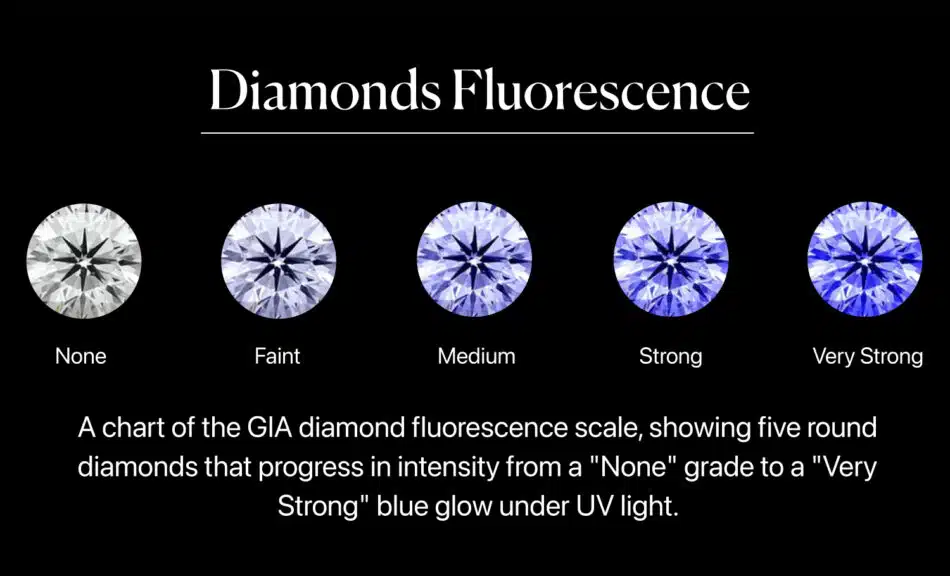
Grade 1: None
What it means: Just as it sounds. The diamond shows absolutely no reaction to UV light. When the gemologist places it under the lamp, nothing happens. It does not glow.
My Take (Why it matters to you): This is the most common result for diamonds (about 65-75% of them fall into this category). It is a completely neutral characteristic. It has no impact on the diamond’s appearance or its price. It is simply a statement of fact. If your report says “None,” you have nothing to think about, and you can move on.
Grade 2: Faint
What it means: A very slight, soft glow is detected by the gemologist under the UV lamp.
My Take (Why it matters to you): Let me be crystal clear, because this is important: faint fluorescence in diamonds is a complete and total non-issue. The glow is so subtle that even for a trained professional, it can be difficult to spot.
It will have absolutely no visible effect on your diamond’s appearance in any lighting condition, ever. From a practical, real-world buying perspective, you should treat a “Faint” grade the exact same way you treat a “None” grade: as a completely neutral factor that you can confidently ignore.
Grade 3: Medium
What it means: A noticeable blue glow is clearly visible when the diamond is under a UV light source.
My Take (Why it matters to you): This is where the plot thickens and the diamond fluorescence good or bad debate truly begins. With a diamond medium blue grade, the glow is apparent under UV light.
In the vast majority of cases, this still has no negative impact on the diamond’s appearance in normal daylight. However, because it’s a stronger reaction, the market often applies a small price discount to these stones. This can create a potential value opportunity.
The real question, which we’ll tackle in the very next section, is whether this noticeable glow has any effect—positive or negative—when you’re actually wearing the ring.
Grades 4 & 5: Strong and Very Strong
What it means: The diamond exhibits a powerful, intense, and unmistakably bright glow under UV light.
My Take (Why it matters to you): These are the two grades that send most uninformed buyers into a panic. When someone sees strong blue fluorescence diamond on a report, they often fear the stone is defective.
This fear is so common that diamonds with Strong or Very Strong fluorescence almost always trade at a significant discount—sometimes 5% to 15% lower than a comparable diamond with no fluorescence.
Now, does that mean you should run away? Absolutely not. It means you need to be an educated buyer. For a tiny fraction of these stones, the strong reaction can cause a negative milky or hazy appearance. But for the rest? You might be looking at a diamond that offers a huge discount for a characteristic you’ll never even see.
To put all this in context, remember this key stat: of the 25-35% of diamonds that exhibit fluorescence, the vast majority—over 95%—glow blue. While you might occasionally see a report mentioning a yellow or green glow, the blue fluorescence diamond is the one you will almost always encounter. And that blue color, as we’re about to see, can be a secret weapon.
The Verdict: When is Diamond Fluorescence Good or Bad?
Alright, let’s get to the real verdict. You know what diamond fluorescence is, and you know how it’s graded. But now we have to answer the million-dollar question: when you see it on a report, is it a good thing or a bad thing?
The truth is, it can be both—but the “bad” is incredibly rare, and the “good” is a secret weapon that savvy buyers can use to their advantage.
The RARE Negative: Hazy or “Overblue” Diamonds
Let’s start by tackling the single biggest fear you’ll read about online. This is the source of all the anxiety surrounding the topic. In a very small number of cases, a strong blue fluorescence diamond can appear milky, hazy, or oily in daylight. This “overblue” effect can negatively impact a diamond’s transparency and make it appear less brilliant.
Now, let me be crystal clear: this is a real phenomenon, but it is extremely rare.
Don’t just take my word for it. The GIA, the world’s leading gemological authority, conducted an exhaustive study on this very issue. Their findings? This hazy or oily appearance affects fewer than 0.2% of the tens of thousands of fluorescent diamonds they examined. That’s one in every 500, and it was only ever seen in stones with a “Strong” or “Very Strong” grade.
From my own time in the trade, I can tell you that this is most likely to be a potential issue in diamonds with very high color grades (D, E, F color) and high clarity. In these clinically pure stones, any slight haze is more easily noticeable.
The POWERFUL Positive: The Secret Weapon for G, H, I, and J Color Diamonds
Now, this is the part the fear-mongers never tell you about. This is the insider’s trick that can save you serious money.
What is the fluorescence of a diamond truly doing? It’s emitting a blue light. So, what happens when you have a diamond with a faint yellow body color? As you know from basic color theory, blue and yellow are complementary colors—they cancel each other out.
In diamonds with a faint yellow tint (like G, H, I, and especially J colors), a medium or strong blue fluorescence can actually be a feature. The blue glow helps to neutralize the faint yellow, making the diamond appear one or even two color grades whiter to the naked eye.
I’ll never forget a client who was choosing between two diamonds for a 4 carat solitaire diamond engagement ring. One was an H color with no fluorescence, and the other was an I color with strong blue fluorescence.
Side by side, the strong blue fluorescence diamond I color stone looked visibly whiter and more vibrant. It also cost about 15% less. For her, the fluorescence wasn’t a flaw; it was a powerful bonus that got her a better-looking diamond for a much better price.
The Final Verdict from GIA’s Own Study
When the GIA conducted their major study on fluorescence, they weren’t just looking at the stones in a lab. They assembled a panel of observers, from trained gemologists to everyday diamond buyers, and showed them a range of fluorescent diamonds in various lighting conditions without telling them which was which.
The results were conclusive, and I want you to read this carefully: for the overwhelming majority of people, fluorescence had no visible effect on a diamond’s appearance.
In fact, GIA found that, for the average observer, “the strength of fluorescence was not a significant factor.” In many cases, the people in the study actually preferred the appearance of the diamonds with medium or strong blue fluorescence, especially in the lower color grades.
The bottom line is that the industry’s fear of fluorescence has created a market inefficiency—a situation where you can get a beautiful diamond at a discount, all because of a characteristic that, in most cases, you’ll never see. And in some cases, it will even make your diamond look better.
The Top 12 Myths About Diamond Fluorescence (Let’s Get a Few Things Straight)
Alright, if you’ve spent any time researching diamond fluorescence online, your head is probably spinning. The internet is filled with half-truths, outdated opinions, and scary-sounding warnings designed to confuse you.
From my years in the trade, I’ve heard them all. It’s time to put these myths to bed, one by one, with some unfiltered truth.
Myth #1: All Fluorescence is Bad.
Verdict: Absolutely False. This is the biggest and most damaging myth. As we’ve covered, Medium or Strong blue fluorescence can actually improve the appearance of diamonds in the G, H, I, and J color ranges by helping to cancel out any faint yellow tint.
Myth #2: Fluorescence is the Same as a Flaw.
Verdict: False. A flaw is a negative imperfection, like a crack or a large black crystal. Fluorescence is not a flaw; it’s an identifying characteristic. Think of it like a birthmark. It’s a natural part of that specific diamond’s atomic structure, not something that happened to it. GIA grades it on its intensity, not as a positive or negative.
Myth #3: A Diamond with Fluorescence is a “Lower Quality” Diamond.
Verdict: False. The quality of a diamond is defined by the 4 Cs: Cut, Color, Clarity, and Carat. Fluorescence is a completely separate property. A D-color, Flawless, Excellent-cut diamond can have Strong fluorescence, and a K-color, SI2, Good-cut diamond can have None. It is not an indicator of overall quality.
Myth #4: My Diamond Will Glow Blue in Normal Light.
Verdict: False. This is a common fear. Diamonds under ultraviolet light are the only ones that glow. Your diamond will not be glowing at the dinner table, in your office, or in your bedroom. It requires a strong UV source to activate, which you very rarely encounter indoors.
Myth #5: People Will Notice My “Fluorescent Diamond” in Sunlight.
Verdict: Highly Unlikely. While direct, strong sunlight is rich in UV rays, the visible light is so overpowering that any fluorescent glow is usually washed out. In some rare cases, a person with very color-sensitive eyes might perceive a slight “wispiness” or softness in a diamond fluorescence in sunlight, but for the vast majority of people, it is a complete non-issue that you will never notice.
Myth #6: All “Strong Blue” Diamonds Look Milky or Hazy.
Verdict: False. This is the tiny nugget of truth that gets blown out of proportion. As GIA’s own research proved, this negative hazy effect occurs in fewer than 0.2% of all fluorescent diamonds submitted to them. The overwhelming majority of Strong Blue diamonds are perfectly crisp and brilliant.
Myth #7: Fluorescent Diamonds are a Modern Problem.
Verdict: False. Fluorescence in diamonds is a timeless, natural phenomenon. One of the world’s most famous historic diamonds, the 52-carat “Hope Diamond,” glows a fiery red under UV light. It is a natural part of what diamonds are.
Myth #8: Fluorescence Will Get Worse Over Time.
Verdict: False. A diamond’s fluorescence is a stable, unchanging property of its internal atomic structure. It cannot change, fade, or increase over its lifetime. The glow it has today is the same glow it will have in a thousand years.
Myth #9: “Faint Fluorescence” Has a Negative Impact.
Verdict: Completely False. A faint fluorescence diamond grade on a GIA report is considered a gemologically insignificant characteristic. It has no visible impact on a diamond’s appearance and is a total non-issue for buyers. You should treat it exactly the same as “None.”
Myth #10: A Lack of Fluorescence is a Sign of a “Fake” Diamond.
Verdict: False. This is a dangerous myth that can cause people to misidentify a real diamond. The fact is, the majority of diamonds—about 65-75% of them—have no fluorescence at all. A lack of glow under a black light diamond test is more common for a real diamond than a positive glow.
Myth #11: Lab-Grown Diamonds Don’t Have Fluorescence.
Verdict: False. Yes, do lab grown diamonds have fluorescence? They absolutely do. However, their fluorescent patterns and colors can sometimes be different from their natural counterparts due to the different growth methods (HPHT vs. CVD). GIA reports for lab-grown diamonds grade their fluorescence just as rigorously.
Myth #12: It Makes the Diamond “Weaker.”
Verdict: False. The trace elements that cause fluorescence are on an atomic level. They have absolutely zero impact on a diamond’s hardness, toughness, or structural integrity.
Answering the question how strong is diamond has everything to do with its carbon structure, not fluorescence. A fluorescent diamond is every bit as durable as a non-fluorescent one.
The Mehedi Checklist: My Practical Rules for Buying
Alright, we’ve debunked the myths and looked at the science. Now, let’s get down to the most important part: what should you actually do when you’re shopping? How do you apply this knowledge?
It’s actually very simple. Forget all the noise and just follow these three practical rules.
Rule 1: Always See the Diamond (Your #1 Priority)
This is the most important rule. The only way to know for sure if a Strong Blue or Very Strong Blue diamond has a negative hazy appearance is to look at it. Because the effect is so rare, you cannot simply dismiss a diamond because of the words on its certificate.
This is where buying online from a reputable seller is actually a huge advantage. High-quality, 360° HD videos, like the ones that are standard on James Allen, are essential. Spin the diamond around. Look at it from all angles.
The question you need to ask is simple: Does it look crisp, bright, and brilliant?
If the answer is yes, then the fluorescence is not causing a negative hazy effect. Period. You can trust your own eyes. If the diamond looks fantastic in a high-quality video, you have found a potential bargain. If it appears even slightly milky or oily, just move on to the next one.
Rule 2: Tailor Your Strategy to the Diamond’s Color
Not all diamond colors should be treated the same when it comes to fluorescence. My advice is to split your strategy into two distinct camps.
- For high color grades (D-G Color diamonds):
In this range, you’re paying a premium for a complete absence of color. My advice here is to be more cautious. To be absolutely safe and protect that premium investment, I recommend sticking to diamonds with None or Faint fluorescence.
A Medium Blue is likely fine, but with these icy-white stones, you simply don’t need the color-canceling benefit fluorescence can provide. - For lower color grades (H-K Color diamonds):
Don’t be afraid of fluorescence here; embrace it. In this range, a Medium or even Strong Blue fluorescence can be your secret weapon.
The blue tones can help neutralize the faint natural yellow of the diamond, making it appear whiter and brighter—essentially giving you a visual upgrade at a discounted price. An I color diamond with Strong Blue fluorescence is one of the best value propositions in the entire diamond market.
Rule 3: Understand the Lab-Grown Angle
So, do lab grown diamonds have fluorescence? Yes, they absolutely do. But you should be aware of a few nuances.
The fluorescence in lab-grown diamonds can sometimes be different from their natural counterparts. Due to the different growth methods (HPHT vs. CVD), you might encounter more unusual glow colors, like yellow, green, or orange, or see unique patterns of fluorescence within the stone.
However, a GIA or IGI report for a lab diamond will grade its fluorescence just as rigorously. The same rules apply: a faint fluorescence is a non-issue, and a strong fluorescence requires you to look at the stone to check for any negative effects on its appearance. Don’t be scared off by it, just treat it with the same smart, visual-first approach.
The Final Verdict: Flaw or Feature?
So, after all the science, the myths, and the checklists, what’s the final verdict? Is diamond fluorescence a flaw or a feature?
The answer is… it’s a characteristic.
And now that you understand it, you can turn that characteristic into a powerful advantage. The fear and misinformation surrounding fluorescence have created a huge opportunity for the educated buyer.
By not being afraid of a little blue glow in the right diamond, you can find a stone that looks whiter, more brilliant, and offers better value than a non-fluorescent one right next to it.
That’s how you shop like an expert.
Your Questions, Answered
When you’re dealing with a topic this misunderstood, you’re bound to have questions. Here are my direct, no-nonsense answers to the most common ones.


